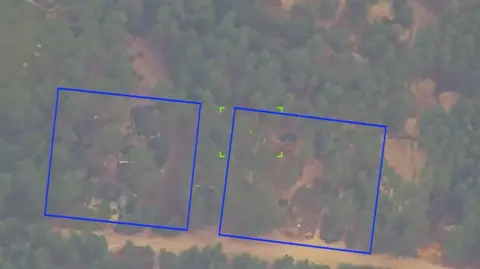In a significant escalation of the ongoing conflict in Ukraine, a Russian missile has tragically struck a Ukrainian military training unit. This incident has resulted in the deaths and injuries of several servicemen, highlighting the volatility of the situation in the region. Reports indicate that three service personnel were confirmed dead, with 18 others suffering various degrees of injury as a result of the missile strike.
The Ukrainian armed forces disclosed the tragedy late on a Tuesday, yet they refrained from revealing the exact location of the training ground impacted by the missile. However, Ukrainian war journalist Andrei Taplienko reported that this particular training facility is situated in the Chernihiv region, which is located north of the capital city, Kyiv, and shares borders with both Russia and Belarus. This geographical detail is crucial, as the proximity to these neighboring countries increases the stakes and implications of military operations in the area.
Adding to the gravity of the situation, the Russian Ministry of Defense released a video purporting to show the missile strike. According to Russian officials, the strike was carried out by an Iskander ballistic missile in a densely wooded area, resulting in over 20 explosions indicative of cluster-type munition effects. However, the authenticity of this video remains unverified, and conflicting figures concerning the number of Ukrainian casualties have already emerged. While Ukraine has reported a specific number of casualties, the Russian side claims that the figure is significantly higher, leaving room for speculation and varying narratives surrounding the event.
In reaction to the tragic losses, Ukraine’s ground forces issued a somber message via social media, acknowledging the difficult circumstances. Despite the safety measures that were presumably in place, they expressed deep regret that they could not entirely prevent casualties among soldiers. The confirmation of this missile strike marks a continuation of a dangerous trend, as it is the third occurrence in just over two months where Russian forces have targeted Ukrainian military training units. Back in May, a similar missile attack in the northern border region of Sumy claimed the lives of six servicemen, followed by another incident last month, which resulted in 12 fatalities and around 60 wounded individuals.
Given the alarming frequency of these strikes, the Ukrainian military’s protective measures during training exercises have come under scrutiny. A thorough investigation has been promised to ascertain whether the “actions or inaction of officials” contributed to the tragic outcomes of the missile strike on Tuesday evening. In a significant administrative move, Mykhailo Drapatyi, the commander of the ground forces, resigned following the previous month’s deadly attack, expressing his sorrow over the loss of young soldiers from a training battalion. He emphasized that many of the victims were likely in shelters at the time of the assault, raising further questions about the military’s preparedness and the efficacy of its procedures in safeguarding its personnel.
This attack represents yet another chapter in the ongoing war between Russia and Ukraine, which continues to evolve with each incident. With allegations from both sides regarding casualties and operational effectiveness, the situation remains tense. The military conflict, now marked by serious repercussions for enlisted personnel, not only demonstrates the volatility of regional hostilities but also the enduring operational challenges faced by the Ukrainian forces. The path ahead demands not only military responses but also humanitarian considerations for the servicemen who are facing life-threatening conditions in their bid to protect their homeland.
As the unfolding events draw attention from global observers, the implications extend beyond military strategy, affecting the social fabric of Ukraine and instigating broader discussions about the war’s impact on European security. With ongoing casualties and resignations within the Ukrainian military, the conflict emphasizes the urgent need for strategic reassessments and potential resolutions to a war that has already brought significant loss and suffering.












